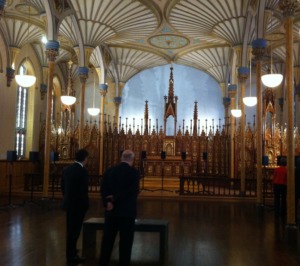
Susan Philipsz and John Cage have shown that the genre has claims to greatness, but two works in Edinburgh betray the emptiness of much sound art.
Let’s get this straight, sound art buffs: of course art can be made with sound. It can be made with anything. The first masterpiece of sound art is Marcel Duchamp’s With Hidden Noise, created exactly a century ago. What you see is a ball of twine between two brass plates. What you are told is that it has an unknown object sealed inside. When the twine is shaken the hidden object moves about and makes a rattling noise. As the title makes clear, this “hidden noise” is crucial to the artwork’s meaning.
Duchamp was a genius. He could put a noise in a ball of string and hey presto, it was art. He made it look easy – well, he made everything look easy – and yet many daft and self-indulgent sound works are only “art” at the most glib level as sadly exposed by the National Gallery’s exhibition Soundscapes last summer, in which only Philipsz rose above the banal. They prove what an act of magic it really is to turn sound into sculpture, the ear into a mind’s eye.
